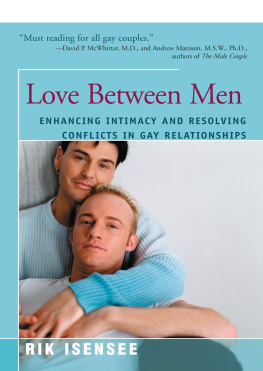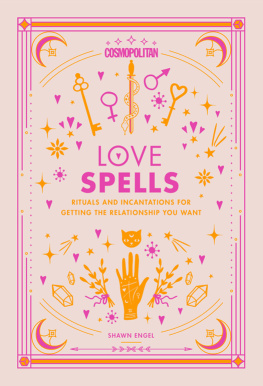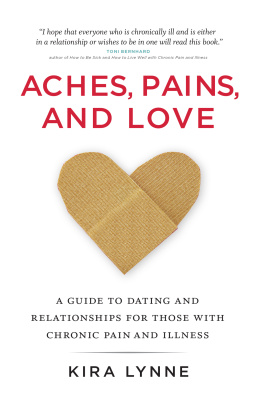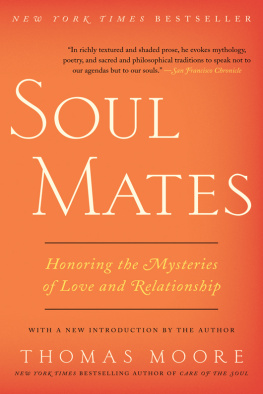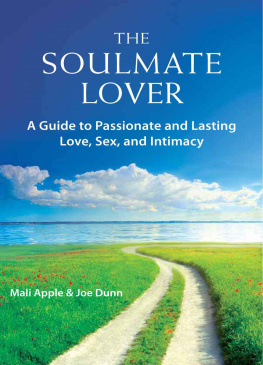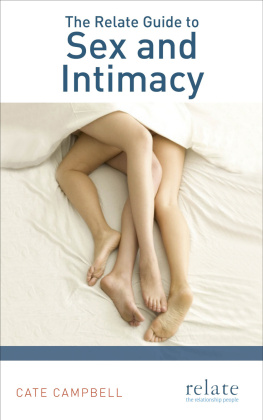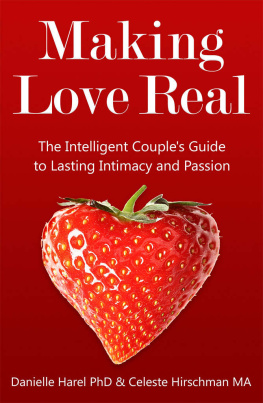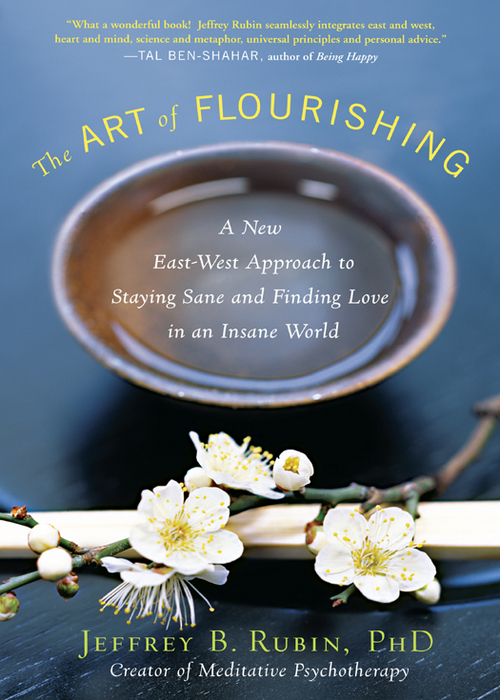Copyright 2011 by Jeffrey Rubin
All rights reserved.
Published in the United States by Crown Archetype, an imprint of the Crown Publishing Group, a division of Random House, Inc., New York.
www.crownpublishing.com
C ROWN A RCHETYPE with colophon is a trademark of Random House, Inc.
Grateful acknowledgment is made to the following for permission to reprint previously published material:
Erich Fromm Estate: Excerpts from Erich Fromms portrait of D.T. Suzuki from The Eastern Buddhist (New Series), pages 8689, Vol. II (Kyoto: Kawakita Printing Co., August, 1967). Reprinted by permission of the Erich Fromm Estate, c/o Dr. Rainer Funk, Tuebingen.
Graywolf Press: Excerpt from Once There Was Light from Having It Out with Melancholy from Collected Poems by Jane Kenyon, copyright 2005 by The Estate of Jane Kenyon. Reprinted by permission of Graywolf Press, Minneapolis, Minnesota, www.graywolfpress.org.
Library of Congress Cataloging-in-Publication Data
Rubin, Jeffrey B.
The art of flourishing / Jeffrey B. Rubin.1st ed.
p. cm.
1. Mind and body. 2. MeditationTherapeutic use. 3. Well-being. 4. Spiritual life. I. Title.
BF161.R79 2010
158.12dc22 2010034302
eISBN: 978-0-307-71891-4
JACKET DESIGN BY JEAN TRAINA
JACKET PHOTOGRAPHY BY GYRO PHOTOGRAPHY/
AMANA IMAGES/GETTY IMAGES
v3.1
To my teachers,
Joel Kramer
George Atwood
T. K. V. Desikachar
Shinzen Young
Louis Mitsunen Nordstrom
And to my patients,
who have taught me more than they could ever know
C ONTENTS
Come, my friends,
Tis not too late to seek a newer world.
A LFRED , L ORD T ENNYSON
I NTRODUCTION
I n the spring of 2009, The New York Times Magazine published a story entitled Enlightenment Therapy about the psychoanalytic treatment of a Zen Buddhist master. The article generated great interest and controversy. Not only were psychoanalysis and Buddhism discussed together in a mainstream publication, but psychotherapy was written about from the point of view of the clienta highly esteemed Zen masterwho had the courage and integrity to admit he had psychological conflicts and participated in psychotherapy, rather than adopt the mask of a spiritual teacher who had transcended emotional suffering.
The master had been abandoned and neglected in childhood, and Zen provided him with solace and insight, and more important, the only spiritual and emotional home hed ever had. Zen saved my life, he told Chip Brown, the author of the article. Meditation put me back together again.
Decades of Zen training and meditation, however, never healed his core psychological wounds. In fact, Zen practice inadvertently led him to bury them, thus concealing his deepest conflicts from himself and ensuring that they would return in more destructive ways. The Zen experience of forgetting the self was very natural to me, he said. I had already been engaged in forgetting and abandoning the self in my childhood that forgetting was pathological. I always had some deeper sense that I wasnt really there, that my life didnt seem real. In therapy I began to realize this feeling of invisibility was maybe the central theme of my life.
His attempt at self-protection impeded truly caring for himself. [W]ithout the therapy experience, claimed the Zen master, I might have died without having truly lived.
I was his therapist and what we did in those sessions was something I call meditative psychotherapya synthesis of the most powerful elements of Eastern and Western wisdom that I have developed over thirty years of professional practice and personal exploration. By combining meditation and yogic breathing to quiet and focus the mind with psychotherapy to illuminate the meaning of what arises during ones spiritual practice, the Zen master was able to reclaim his life and even to flourish. Meditative therapy also dramatically confirmed what I had realized through years of intense study and practice in Ivy League colleges and Buddhist monasteries: integrating the best aspects of therapy and meditation is profoundly more effective than practicing either alone.
Meditative therapy is central to the art of flourishingengaging our life wholeheartedly and thriving; living well and completely; leading a meaningful and rewarding life. Flourishingthe most fulfilling way to liveis not a new topic. It was of central concern to Aristotle and ancient Greek ethical philosophers. In his Nicomachean Ethics, Aristotle defined flourishing as living well and faring well.
Does flourishing come from outside of us? From having it all, removing external constraints, and feeling good or happy? Or does it reside solely withinwhen we maximize our potential to achieve inner peace?
Neither.
Flourishing takes us in a new directiontoward a focus on internal emotional awareness, insight, and transformation, and on better relationships. We realize the best within ourselves and enrich the lives of those people we are close to. Because flourishing focuses both on changing ourselves and on getting along better with other people, it is richer than either endeavor by itself.
While flourishing may seem difficult to attain, it is eminently within our reach, once we understand what it is and how to achieve it.
We flourish when we cultivate clarity and equanimity in the face of the speed and confusion that surround us; when we access the untapped creativity within and appreciate beauty inside and out. Flourishing involves imaginatively addressing the challenges that confront us and discovering our passions and purposes.
Flourishing doesnt always feel good. Sometimes we must confront painful options or make difficult choices. On occasion, flourishing is just doing the best we can given imperfect and even undesirable circumstances such as familial, financial, or professional strains, illness, or the infirmities of aging.
We flourish when we take great care of ourselves, connect with spirituality, widen our moral imaginations, cultivate ethical accountability, and live authentically.
Once we have expanded our capacity to flourish we can create greater intimacy with those we care about and have infinitely healthier interactions and stronger bonds with partners, family, and friends. Flourishing is the most important goal well ever pursue.
My path to creating meditative therapymy route to exploring flourishingbegan in an unlikely place: the basketball court. Basketball was my first love. I played with passionate intensity. And it rewarded me by giving me the tools to understand the difference between mere happiness and thriving.
During my senior year of high school, my basketball team, the Woodmere Long Island Wolverines, was playing against The Fieldston School, a team we were favored to beat. In order to remain in contention for the league title, we had to win. And winning was next to godliness in my adolescent mind. It was a hotly contested, heart-throbbing, roller-coaster battle. When we scored with ten seconds left in the game, our one-point lead appeared to be invincible. But with six seconds to go, the other team scored. We were down by one.
Suddenly, a great calm descended upon me and I called time out. Five seconds remained on the clock. My teammates faces showed panic as we huddled close together. I could see that they had given up. In their minds the game was over. I pushed through to my coach, Mr. Kastan, and put my hand on his shoulder. Tell them not to panic and get me the ball.


